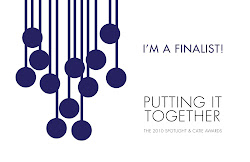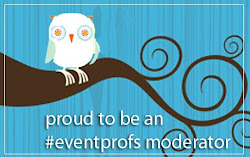
BeEvents was selected by @ready2spark expert Lara McCulloch-Carter to participate in an e-book featuring seven Social Media experts sharing their thoughts on how Social Media will effect the future of meetings and events.
Included here is an expert from our chapter. The book is available for free from Ready2Spark's website.
I am on a mission to single-handedly destroy the ‘General Session’.
Ok, ok so I will not exactly be able to eradicate General Sessions from meetings all on my own. And, yes, General Session will still go on at meetings for years and decades to come. Just as breakout sessions and auxiliary events will continue to happen, because regardless of the immense growth and wealth of resources technology continues to churn out to help us meet better, accomplish more (or at least be busier), human beings are fundamentally social creatures and will always seek out opportunities to get together. The “live” event will never die. It is just going to change.
At BeEvents, we believe whole-heartedly in the notion that the purpose of event design is to facilitate the conversation. The growth in our industry is a reversal of the planning the process from task-driven planning to strategy-driven planning. It is not about finding the right color linen, booking the right entertainment, or figuring out the perfect way to process registrations and distribute gifts. And at the same time is it exactly about picking the right color linen, great entertainment and facilitating a smooth registration process. But the difference lies in knowing and understanding why you are doing it.
Far to often the planning process is thought of as:
Step 1: We’re Having a Meeting
Step 2: Need to pick a Location and Theme
Step 3: Complete all the to-do lists, checklists, master task sheets, forms, contracts,
vendors, obligations, negotiations, arbitrations, and many other …tions, until we collapse
post event with a stack of evaluations that really tell us nothing, hopefully a cold meal
which was left in the warmer, maybe a pat on the back from our boss or the corporate
executive and tomorrow we get up and do it all again.
But how often is Step 1 preempted with the question of “Why are we meeting in the first place?“ It is a question of great functional importance as budgets and staff have been cut and new technologies and virtual solutions present themselves as “cost-saving” measures. We need to question why in order to best understand what it is we are trying to accomplish (and, by default, what it is we are therefore seeking to measure to evaluate the event, its success and ROI). It is not that the logistical duties of effectively planning and producing a meeting and event are not relevant – they are critical. But first we must understand what the purpose of the project is in order to do those tasks effectively.
This is why strategy matters. The ability of an organization or an event team to effectively articulate its value proposition alongside it brand and goals and objectives, with without doubt simply produce better meetings and events. It is this organization that understands how to mix the virtual experience with the live experience in order to create learning and behavioral change (is that not the function of the meeting or incentive program, to educate and change behavior). It is this group who understands that the best spend of an event budget is on the items that most directly will create the experience necessary to meet the learning objectives. This group knows that the color of the carpet or the linens does not matter in and of itself because it is pretty or because it is ugly. They matter instead because they are contributors to effect-iveness of the audience’s experience.
The meaning is in the message and the message is communicated in the experience. The lesson of Social Media is that it creates offers environment in which communities of people can engage in conversation. Meetings and events are intended to do the same, with a bit of shaping, of course. And when all the elements are working together, the ability of the audience to engage in dialogue and create thoughts, ideas, and learnings multiplies. In this environment you tap into the natural expertise of everyone in the room – their experiences and their networks - expertise and ideas that hopefully track back to the office post event. That is why we have to get rid of the expert speaker and get rid of the stage and start the conversation among those in the room.






No comments:
Post a Comment